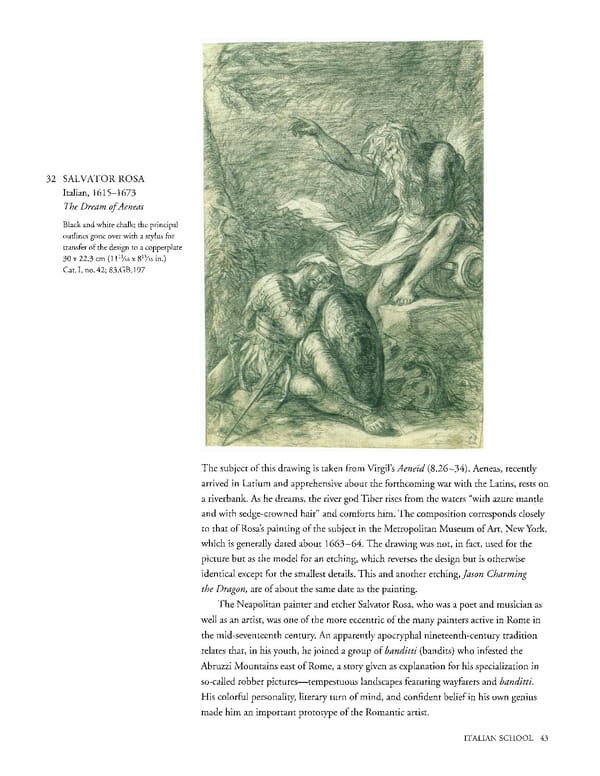32 SALVATOR ROSA Italian, 16151673 The Dream of Aeneas Black and white chalk; the principal outlines gone over with a stylus for transfer of the design to a copperplate 30 x 22.3 cm (11 13/16 x 8 13/16 in.) Cat. I, no. 42; 83.GB.197 The subject of this drawing is taken from Virgil's Aeneid (8.26—34). Aeneas, recently arrived in Latium and apprehensive about the forthcoming war with the Latins, rests on a riverbank. As he dreams, the river god Tiber rises from the waters "with azure mantle and with sedgecrowned hair" and comforts him. The composition corresponds closely to that of Rosa's painting of the subject in the Metropolitan Museum of Art, New York, which is generally dated about 1663—64. The drawing was not, in fact, used for the picture but as the model for an etching, which reverses the design but is otherwise identical except for the smallest details. This and another etching, Jason Charming the Dragon, are of about the same date as the painting. The Neapolitan painter and etcher Salvator Rosa, who was a poet and musician as well as an artist, was one of the more eccentric of the many painters active in Rome in the midseventeenth century. An apparently apocryphal nineteenthcentury tradition relates that, in his youth, he joined a group of banditti (bandits) who infested the Abruzzi Mountains east of Rome, a story given as explanation for his specialization in socalled robber pictures—tempestuous landscapes featuring wayfarers and banditti. His colorful personality, literary turn of mind, and confident belief in his own genius made him an important prototype of the Romantic artist. ITALIAN SCHOOL 43
 Masterpieces of the Getty Museum: Drawings Page 43 Page 45
Masterpieces of the Getty Museum: Drawings Page 43 Page 45